What is SAP Business One
SAP Business One is a business software designed for small and medium-sized companies. Think of it as a tool that helps businesses manage everything in one place like their finances, sales, inventory, customer relationships, and operations.
Here’s a simple breakdown of what it does:
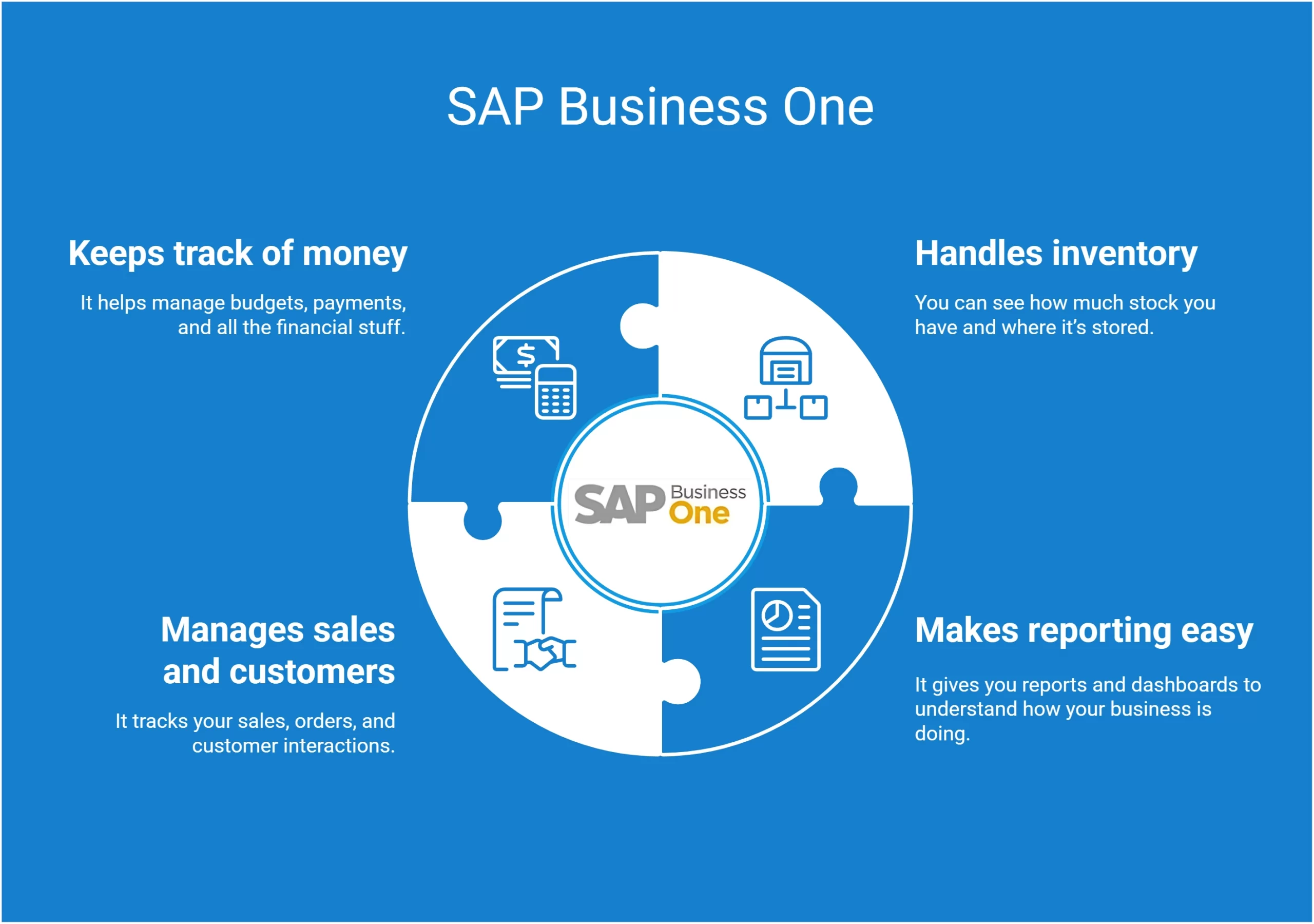
- Keeps track of money: It helps manage budgets, payments, and all the financial stuff.
- Handles inventory: You can see how much stock you have and where it’s stored.
- Manages sales and customers: It tracks your sales, orders, and customer interactions.
- Makes reporting easy: It gives you reports and dashboards to understand how your business is doing.
Why, When, and Who Created SAP Business One?
Imagine you run a small business, and you’re doing everything by yourself selling, keeping track of stock, managing money, and helping customers. But there’s a problem: you don’t have a simple tool to help with all of this. That’s exactly why SAP Business One was created!
In 1996, a company from Israel called TopManage noticed that small businesses didn’t have easy or affordable tools to help them manage their work. Big companies had expensive software, but smaller businesses needed something simpler. So, Reuven Agassi and his team at TopManage created SAP Business One to help small businesses run better.
In 2002, a big software company from Germany called SAP saw how helpful this software was and decided to buy TopManage. They made the software even better and turned it into the SAP Business One we use today. Now, this software helps small businesses around the world manage everything more easily!
How SAP business one Work
If I explain it technically, many people might not understand it. So, let’s start with an example instead.
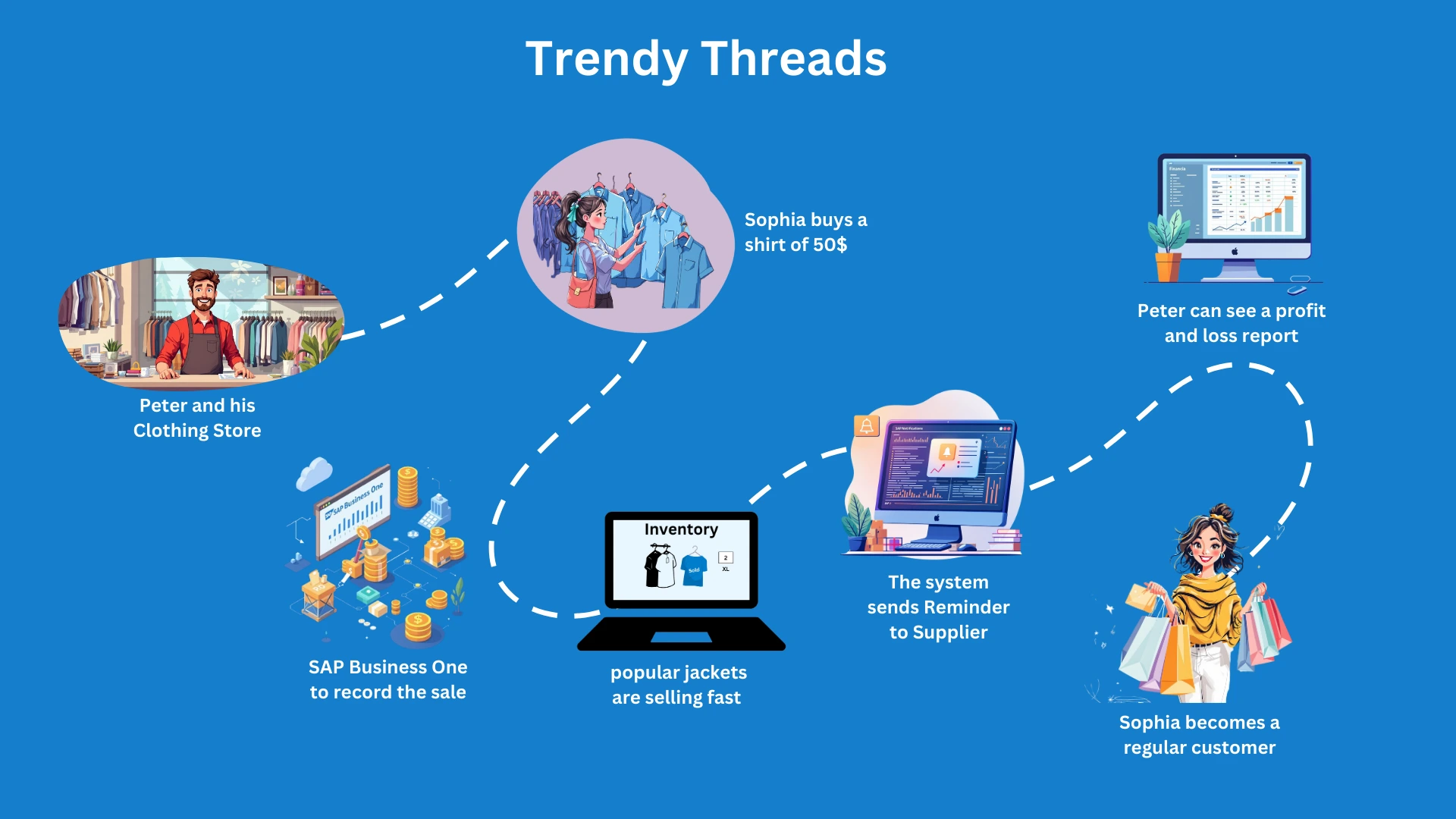
Meet Peter and His Clothing Store
Peter owns a small clothing store called “Trendy Threads.” He sells shirts, pants, and jackets. Business is growing, but managing everything sales, inventory, and finances feels overwhelming. That’s when Peter decides to use SAP Business One.
[One day, a customer (Sophia), buys a shirt for $50. Peter uses SAP Business One to record the sale.]
- The system automatically reduces the stock by one shirt.
- It also records the income in the store’s financial records.
(Now, Peter doesn’t need to update multiple spreadsheets it’s all done instantly in SAP Business One.)
[A week later, Peter notices the popular blue jackets are selling fast.]
[SAP Business One shows that only 5 blue jackets are left in stock.]
[The system also sends a reminder to Peter to reorder the jackets from his supplier before they run out.]
(This helps Peter stay on top of inventory without worrying about manual counting.)
[Every month, Peter needs to check if his store is making a profit.]
- SAP Business One keeps a record of all his sales (income) and expenses like rent, electricity, and supplier payments.
- With just one click, Peter can see a profit and loss report that shows how his business is doing.
[Sophia becomes a regular customer and buys more items.]
- SAP Business One saves all her details her name, what she bought, and even her favorite products.
- Later, Peter sends Sophia a special discount offer for jackets, which makes her happy and brings her back to the store.
[At the end of the year, Peter looks at the reports in SAP Business One.]
- He notices that jackets sell better in winter and shirts in summer.
- Using this information, he orders the right products at the right time, saving money and increasing sales.
Why Choose SAP Business One Over Other SAP Products?
Customized for Your Business Size
- SAP Business One: Think of this as the ERP system made just for small to medium-sized businesses. It’s not bloated with unnecessary features and is designed to meet the core needs of companies that want to streamline their operations without breaking the bank.
- SAP S/4HANA or SAP ECC: These powerhouses are for larger enterprises with complex requirements and multiple business units across different regions. If you’re managing a multinational company with diverse needs, these solutions are up your alley.
Complexity Less is more
- SAP Business One: Straightforward and to the point. It covers the essentials accounting, sales, inventory management, and purchasing without overwhelming you. The interface is clean and easy to use, so your team can start using it with minimal training.
- SAP S/4HANA or SAP ECC: Feature-rich and highly customizable. While that sounds great, it also means more configuration and a steeper learning curve. If your business is global with a complicated supply chain, this is where SAP’s larger products shine.
Cost Affordable vs. Investment
- SAP Business One: Budget-friendly and ideal for growing businesses. It offers all the necessary functionality without the hefty price tag of its larger counterparts.
- SAP S/4HANA or SAP ECC: More expensive but you’re paying for a system that can scale and handle complex operations across multiple regions. These systems are a major investment, and they’re often best suited for large enterprises with the resources to support them.
Scalability How Big Can You Go?
- SAP Business One: It’s designed for SMBs, but that doesn’t mean it can’t grow with your business. As your company expands, SAP Business One can handle increasing demands though, if you reach the enterprise level, it might be time to consider upgrading.
- SAP S/4HANA or SAP ECC: These solutions can scale to handle millions of transactions and users across various regions, perfect for global corporations. They grow with you, no matter how big your company gets.
Speed of Implementation
- SAP Business One: Ready to go in months, not years! If you need a solution that gets your business up and running quickly, SAP Business One is your go-to. It’s designed for fast implementation and minimal disruption.
- SAP S/4HANA or SAP ECC: With great power comes a longer timeline. Implementing these systems often takes a year or more due to the complexity and size of the setup. Not ideal if you’re looking for a quick solution.
Integration Connecting the Dots
- SAP Business One: This solution is a one-stop shop for many businesses, handling everything from accounting to sales in one place. It’s simpler to integrate with other tools if needed, but you won’t need a whole ecosystem of external systems to make it work.
- SAP S/4HANA or SAP ECC: These systems are made to integrate with a range of business tools, offering more customization and flexibility. If you need to tie together multiple systems across different business units, these solutions are ideal
Industries Using SAP Business One
SAP Business One is a powerful and flexible solution that fits the unique needs of various industries. Here’s how businesses across different fields use it to streamline operations and achieve their goals:

Manufacturing
Manufacturers rely on SAP Business One to manage everything from raw materials to finished products. It helps them plan production schedules, avoid delays, and keep an eye on quality. Whether it’s a small workshop or a large factory, it ensures production runs efficiently.

Retail and Wholesale
For retailers and wholesalers, SAP Business One makes it easy to track inventory, manage suppliers, and analyze sales trends. It ensures shelves are always stocked with what customers want. For example, a clothing store can track seasonal trends and reorder items quickly to keep up with demand.

Distribution
Distributors use SAP Business One to organize their supply chains and ensure timely deliveries. It helps track inventory levels, manage shipping schedules, and monitor delivery performance, ensuring customers get what they need, when they need it.
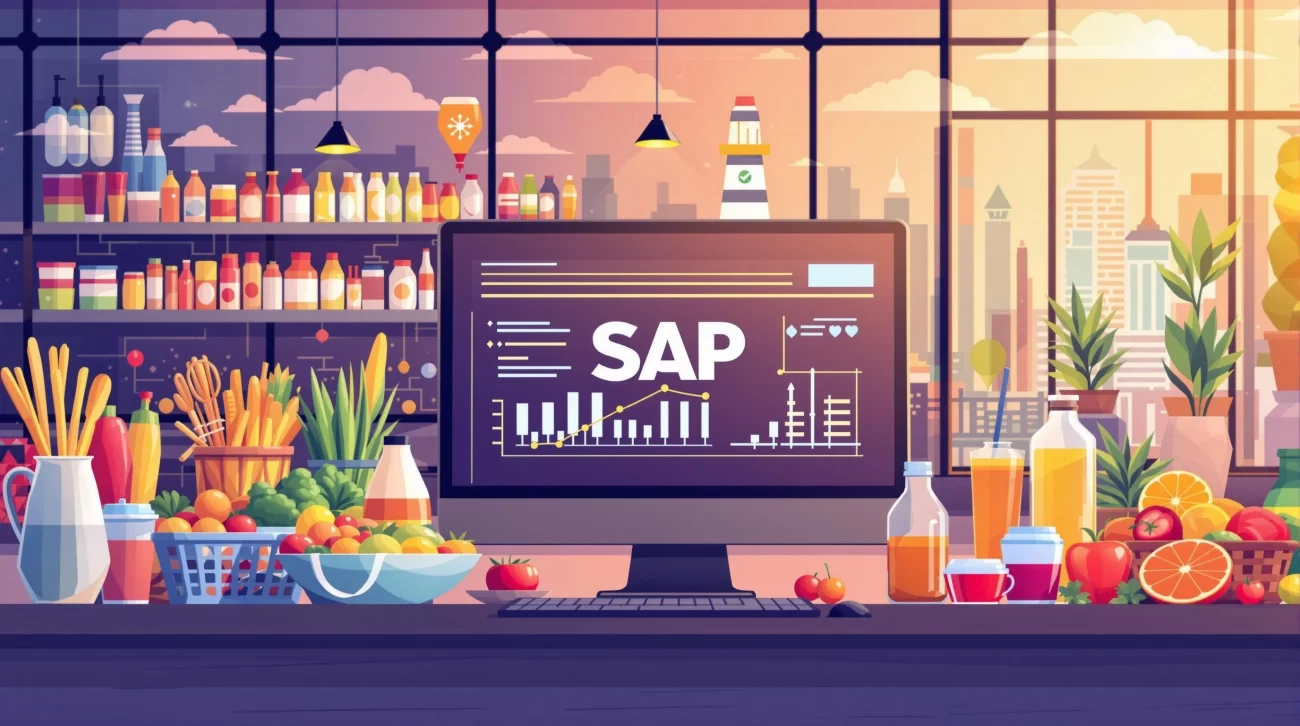
Food and Beverage
In the food and beverage industry, managing perishable goods and meeting regulatory standards is critical. SAP Business One provides tools to monitor inventory freshness, reduce waste, and maintain quality. For example, a food processor can use it to ensure every product meets safety and quality standards before it leaves the facility.

Healthcare and Pharmaceuticals
Healthcare and pharmaceutical businesses handle sensitive data and regulated products. SAP Business One helps them track inventory, manage compliance requirements, and organize patient or client information securely. A pharmaceutical company, for instance, can manage product batches and expiration dates efficiently.

Services
Service-based businesses like consulting, IT, or repair services use SAP Business One to manage their projects, schedule tasks, and track billing. It ensures that clients receive timely and professional service while keeping everything organized internally.
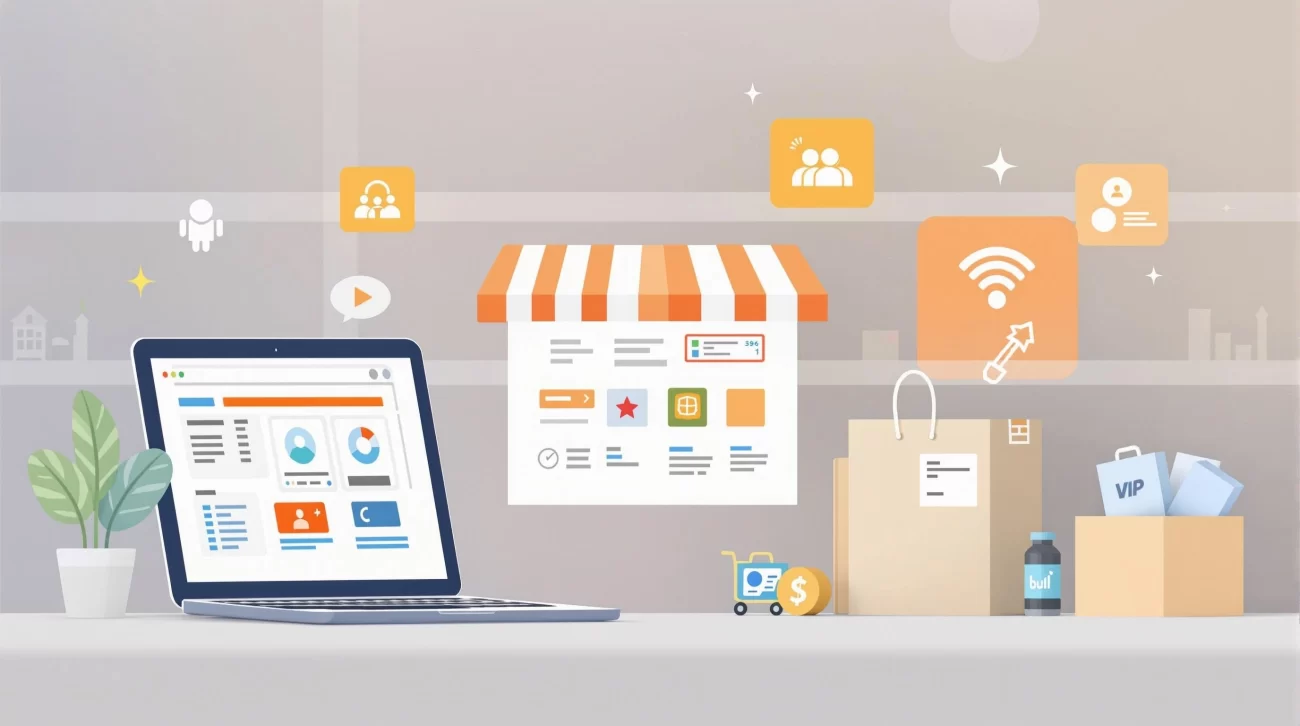
E-commerce
For online businesses, SAP Business One integrates seamlessly with e-commerce platforms. It synchronizes inventory, tracks orders, and provides insights into customer behavior. Whether you’re running a small online shop or a large e-commerce platform, this tool helps keep operations smooth and efficient.
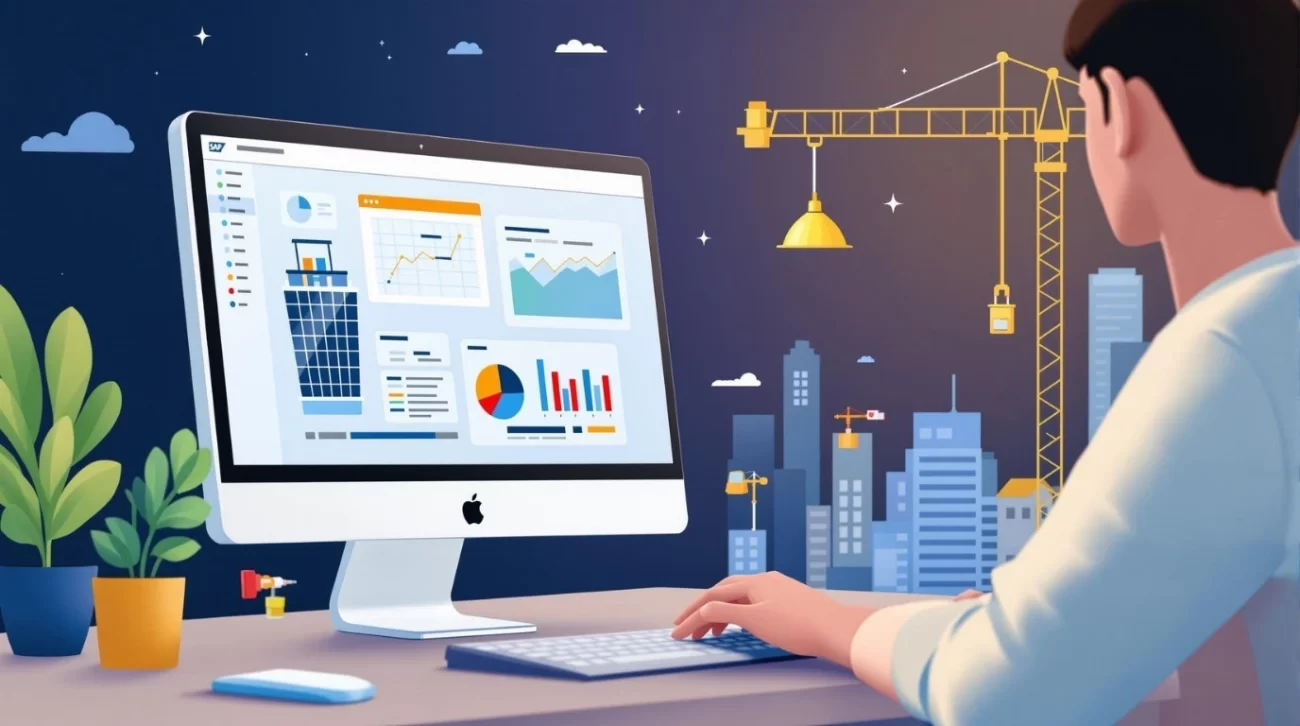
Real Estate and Construction
Real estate and construction companies use SAP Business One to manage budgets, resources, and timelines effectively. It helps oversee every stage of a project, ensuring costs are controlled and deadlines are met. For instance, a construction firm can track expenses and project milestones all in one place.
Implementation and Customization
When it comes to SAP Business One, it’s not just about installing software it’s about shaping it to work perfectly for your business. Let’s break it down:
Implementation
- Understanding Your Needs: Experts learn about your business processes, challenges, and goals.
- Installing the System: The software is installed on your servers or cloud environment.
- Data Migration: Your existing data like inventory, customer records, and finances is transferred into the system.
- Training Your Team: Your employees are trained to use the system effectively.
- Testing: Before going live, everything is tested to make sure it runs smoothly.
Customization
Every business is different, and SAP Business One understands that. Customization is like adding personal touches to your workspace choosing the color of the walls, arranging furniture to suit your style, or adding tools you need.
SAP Business One offers flexibility to:
- Add Modules: You can include features like advanced inventory, CRM, or industry-specific tools.
- Customize Workflows: The system can be adjusted to match how your team works, automating repetitive tasks and simplifying processes.
- Create Dashboards: Tailor the way data is displayed, so you can focus on what matters most like sales, inventory, or performance metrics.
- Integrate Third-Party Tools: SAP Business One can connect with other software, such as e-commerce platforms, payment gateways, or logistics tools, to create a seamless experience.
Success Stories : OrganOx
The Challenge
Before implementing SAP Business One, OrganOx faced hurdles such as:
- Inefficient processes that slowed down operations.
- Difficulty managing inventory and production schedules.
- The need to meet rigorous regulatory standards without overburdening the team.
The Results
After implementing SAP Business One, OrganOx saw remarkable improvements:
- Improved Efficiency: By automating repetitive processes, the company saved valuable time and resources.
- Better Inventory Control: They could track components and supplies in real-time, ensuring no delays in production.
- Enhanced Scalability: With SAP Business One, OrganOx was able to manage its growth without chaos, positioning the company for long-term success.
- Focus on Innovation: With operations running smoothly, OrganOx dedicated more time to creating life-saving technologies.
Future
SAP Business One has been a trusted tool for small and mid-sized businesses, and its future is bright! As businesses continue to grow and face new challenges, SAP Business One is evolving to meet these needs in even smarter ways. Here’s what the future holds:
More Cloud Solutions
Cloud computing is growing rapidly, and SAP Business One is moving more towards the cloud. This means businesses can access their data and tools from anywhere, anytime without worrying about managing physical servers. The cloud version is more flexible, easier to scale, and can save businesses a lot of money.
Increased Automation
Automation is the future! With SAP Business One, more tasks will be automated, such as ordering supplies, tracking shipments, and even customer follow-ups. This will reduce human error, save time, and allow businesses to focus on what really matters serving customers and growing the business.
AI and Data Analytics
SAP Business One is integrating Artificial Intelligence (AI) and advanced data analytics to give businesses better insights. These tools will analyze huge amounts of data, helping companies predict trends, customer behaviors, and even potential problems before they happen.
Pricing
SAP Business One pricing depends on a few things. Here’s an easy-to-understand guide:
License Types
- Perpetual License (One-Time Payment): You pay once, and the software is yours to keep. Ideal if you want to own the software long-term.
- Subscription License (Monthly or Annual Payment): You pay monthly or yearly. This is more flexible and cheaper upfront.
Number of Users
The cost depends on how many people will use the system.
- Professional Users need full access to all features (e.g., managers, accountants).
- Limited Users only need basic access (e.g., staff who just enter data).
The more users you have, the more you’ll pay.
Cloud vs. On-Premise Deployment
- Cloud Version: You pay a subscription and don’t need to worry about hardware or maintenance. It’s more flexible and lower upfront cost.
- On-Premise Version: You buy and install the software on your own servers. There are higher upfront costs but lower long-term costs.
Customization and Add-Ons
If you need special features, like industry-specific tools (e.g., for retail or manufacturing), you may have to pay extra for customizations.
Implementation Costs
You’ll also need to budget for setting up the system. This includes transferring data, configuring the system, and training staff. Implementation costs can range from a few thousand dollars to tens of thousands, depending on the complexity.
Support and Maintenance
- Cloud Users usually get ongoing support included.
- On-Premise Users often pay an extra annual fee for support (usually around 15-20% of the software cost).
FAQs
What support options are available after I purchase SAP Business One?
After purchasing SAP Business One, you can access ongoing support. If you choose the cloud version, support is typically included in your subscription. For on premise users, there’s usually an annual support and maintenance fee. You can also opt for additional support services, including training, troubleshooting, and software updates.
How long does it take to implement SAP Business One?
The implementation time for SAP Business One can vary, but typically it takes between 1 to 6 months depending on the size and complexity of your business. The process involves system setup, data migration, user training, and testing. A well-planned implementation will ensure a smoother transition.
How secure is SAP Business One?
SAP Business One is designed with strong security measures to protect your business data. It includes features like user-based access controls, secure data encryption, and regular software updates to help safeguard against data breaches and unauthorized access.
Does SAP Business one integrate with other software I’m using?
Yes! SAP Business One can integrate with many third-party applications, including CRM systems, e-commerce platforms, and even Microsoft Office. This integration ensures all your systems work together seamlessly, saving time and reducing the risk of errors
Is training provided for using SAP Business One?
Yes! SAP Business One comes with training options to help your team get the most out of the software. You can access various training resources, including online courses, video tutorials, and personalized sessions. Your implementation partner can also provide hands-on training to ensure a smooth transition.

Jewel Susan Mathew
Experienced SAP specialist and content writer, helping CXOs and leaders drive digital transformation with SAP solutions like S/4HANA, Ariba, Business One, and SuccessFactors.
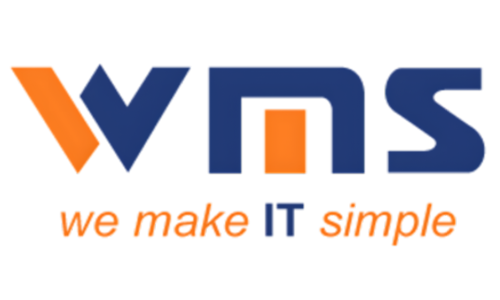
 SAP Cloud ERP Private
SAP Cloud ERP Private SAP Cloud ERP
SAP Cloud ERP SAP Business One
SAP Business One SAP Business ByDesign
SAP Business ByDesign SAP SuccessFactors
SAP SuccessFactors SAP Ariba
SAP Ariba SAP Sales Cloud
SAP Sales Cloud SAP Concur
SAP Concur SAP Business Technology Platform
SAP Business Technology Platform SAP Analytics Cloud
SAP Analytics Cloud SAP Signavio
SAP Signavio SAP Business One FASHION
SAP Business One FASHION SAP Business One PAYROLL
SAP Business One PAYROLL SAP Business One PDC
SAP Business One PDC SAP Business One PDT
SAP Business One PDT SAP Business One REAL ESTATE
SAP Business One REAL ESTATE SAP Business One RENTAL
SAP Business One RENTAL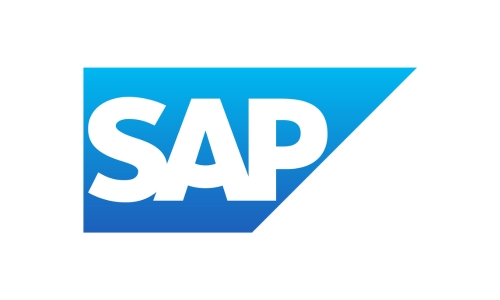
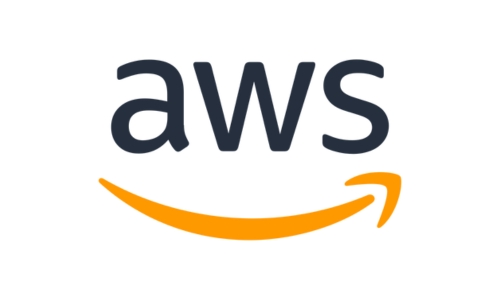




I’ve watched many videos about SAP Business One because I wanted to understand it better. But after reading this detailed article, everything became much clearer. The way it’s explained in simple language really helped. Thank you! Keep up the great work
Thank you! Glad you found it helpful. Stay tuned for more!